
Rao Bika Rathore, was a scion of the Rathore clan of Rajputs and the founder of the city of Bikaner and Bikaner State in present-day state of Rajasthan in India. He was the fifth son of Rao Jodha, founder of the city of Jodhpur. During his reign he controlled an area of 40,000 square miles, which included 3,000 villages.
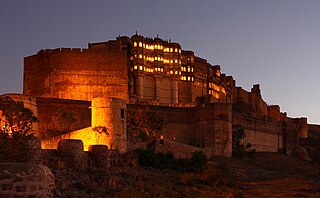
Mehrangarh is a historic fort located in Jodhpur, Rajasthan, India. It stands on a hilltop, rising about 122 m (400 ft) above the surrounding plains, and the complex spans 1,200 acres. It was initially built around 1459 by the Rajput ruler of Rathore clan Rao Jodha, though most of the existing structure is from the 17th century built by his successors. The fort has seven gates, which includes main entrance Jai Pol, built by Maharaja Man Singh to commemorate his victories over the Jaipur and Bikaner armies in 1806. The Fattehpol, commemorates victory of Maharaja Ajit Singh over the Mughals.
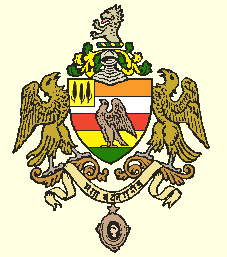
The Rathore dynasty or Rathor dynasty was an Indian dynasty belonging to the Rathore clan of Rajputs that has historically ruled over parts of Rajasthan, Gujarat and Madhya Pradesh.

Mandore is a suburb and historical town located 9 km north of Jodhpur city in the Jodhpur district of the north-western Indian state of Rajasthan.
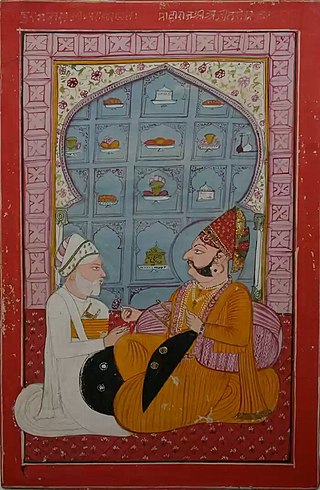
Durgadas Rathore was the Rathore Rajput General of the Kingdom of Marwar. He is credited with having preserved the rule of the Rathore dynasty over Marwar, India, following the death of Maharaja Jaswant Singh in the 17th century. In doing so he had to defy Aurangzeb, a Mughal emperor. He commanded the Rathore forces during the Rajput War (1679–1707) and played a major role in the Rajput Rebellion (1708–1710) and supported the Maratha ruler Sambhaji in the Siege of Janjira aganist the Siddis of Janjira. He was elected as the leader of the revolt along with Raja Jai Singh II of Jaipur. He won a number of victories against the Mughals and forced many Mughal officers to pay tribute to him in the form of chauth.

Rao JodhaRathore was the 15th Rajput chief of Rathore clan who ruled the Kingdom of Marwar in the present-day state of Rajasthan. He was the eldest son of Rao Ranmal. He is known for his illustrious military career and for founding the city of Jodhpur in 1459, which subsequently became the new capital of Marwar after Mandore.
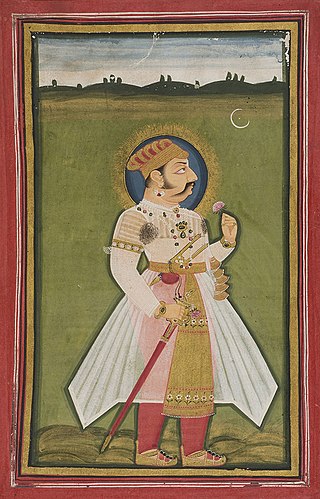
Kumbhkaran Singh (1417–1468), popularly known as Maharana Kumbha, was the ruler of the Kingdom of Mewar. He belonged to the Sisodia clan of Rajputs. It was during his reign that Mewar became one of the most powerful political powers in northern India. He is considered to be the most powerful ruler of his time in India.
Deshnoke is a town in the Bikaner district of Rajasthan, India. The town is famous for the Karni Mata Temple and was established by Goddess Karni-ji herself who led her followers to this region.
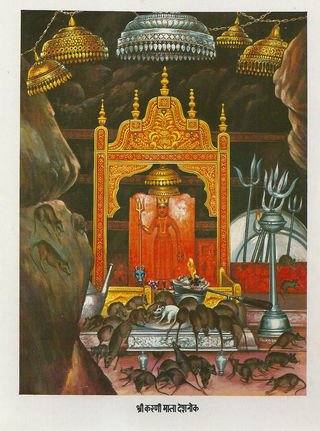
Karni Mata, known by various names such as Bhagwati, Mehaai, Jagdamba, and Kiniyani is a Hindu Goddess of power and victory described as a warrior sage, who lived between 14th and 16th centuries in Western Rajasthan. Karni Mata is the tutelary deity of the Rajputs and Charans of northwestern India. As a Sagati, she is also worshipped as an incarnation of Hinglaj or Durga. She is the official deity of the royal families of Bikaner and Jodhpur. Karniji played an important role in shaping the history of the region. She is intimately associated with the establishment of the Rajput hegemony in the region. With her blessings, Rao Jodha and Rao Bika founded the kingdoms of Jodhpur and Bikaner. At the request of the Maharajas of Bikaner and Jodhpur, she laid the foundations of Bikaner Fort and Mehrangarh Fort, the two most important forts in the region. She lived an ascetic life and was widely revered during her lifetime. Indian Army troops from the Marwar region also regard Karni Mata as their patron deity.

The region of Bikaner, stretching across north-western state of Rajasthan in India, was earlier known as Jangladesh. It included the present-day districts of Bikaner, Churu, Ganganagar, and Hanumangarh. It is bounded on the south by Marwar and Jaisalmer regions, on the east by Ajmer-Merwara region.
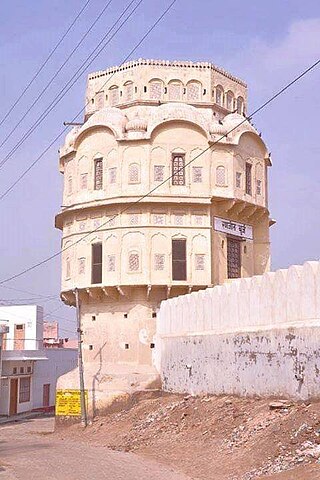
Rawatsar is a city, a municipality, and one of the seven tehsils in Hanumangarh district in the Indian state of Rajasthan. It is divided into 35 wards for which elections are held every five years.

Kingdom of Marwar, also known as the Jodhpur State under the British, was a kingdom in the Marwar region from 1243 to 1818 and a princely state under British rule from 1818 to 1947. It was established in Pali by Rao Siha, possibly a migrant Gahadavala noble, in 1243. His successors continued to struggle against regional powers for domination and 9 out of 15 rulers till 1438 died in combat. In 1395, its capital was changed to Mandore by Rao Chunda of Mandore and to Jodhpur in 1459 by Rao Jodha.

Bikaner State was a princely state in the Rajputana from 1465 to 1947. The founder of the state, Rao Bika, was the eldest son of Rao Jodha, ruler of Jodhpur. Rao Bika chose to build his own kingdom instead of inheriting his father's. Bika defeated the Jat clans of Jangladesh along with his uncle Rao Kandhal and his adviser Vikramji Rajpurohit and founded his own kingdom. Its capital was the city of Bikaner in the northern area of present-day Rajasthan State in India. Karni Mata has been designated as the kuldevi of the royal family of Bikaner.
Rao Satal (1489–1492) was a late 15th-century Rathore Rajput ruler of the Kingdom of Marwar. He was the second son of Rao Jodha and elder brother of Rao Bika of Bikaner who while their father was alive laid the foundation of a separate territory for his descendants. Rao Satal is considered as one of the greatest martyrs of his race, as he's remembered for having sacrificed his own life to keep the honour of his subjects.
Rao Suja/Sooja was the early 16th century Rathore Rajput ruler of the Kingdom of Marwar. He was the younger son of Rao Jodha, brother of Rao Satal. After his brother's untimely death he amongst his other brothers succeeded to the throne. Upon his death ,there was a short struggle for the throne between his grandsons Biram Singh and Rao Ganga, which the latter won.
Rao Lunkaran was the third Rathore Rajput ruler of Bikaner, ruling from 1505 to 1526. He spent much of his two-decade long reign consolidating and expanding the territories of his relatively new Kingdom of Bikaner.
Rao Ranmal, also called Ran Mal or Ridmal, was the Rathore ruler of Marwar. A notable expansionist and skilled warrior, Ranmal is also noteworthy for having twice served as regent of the kingdom of Mewar under two different kings.
Hansa Bai was Rani of the Rajput kingdom of Mewar during the early 15th century. She was the wife of Maharana Lakha Singh and mother to his heir, Mokal.
Dadhivadia is a clan of Charanas of Rajasthan. It is also used as a surname.













